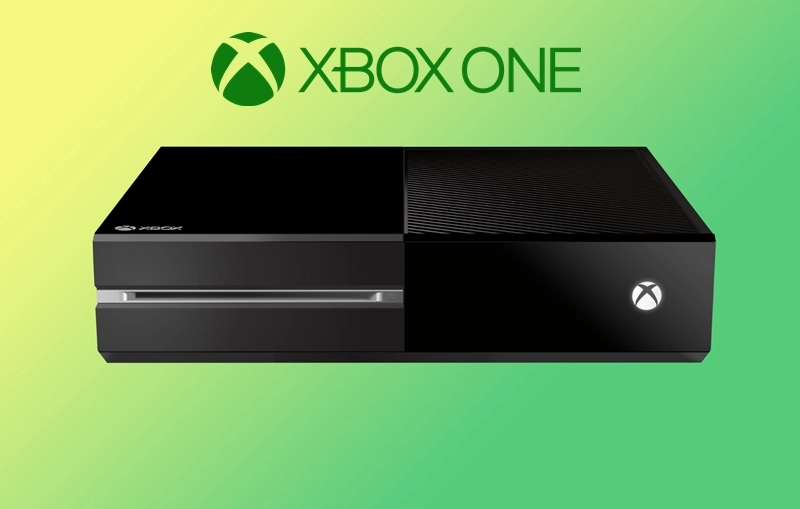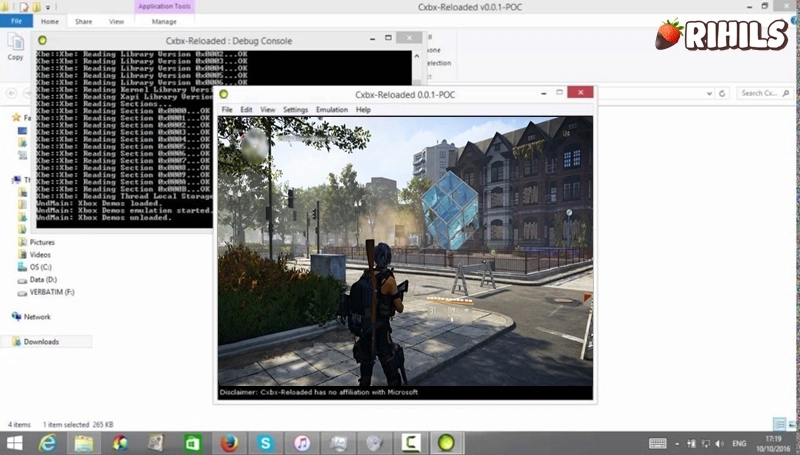How to Install Emulator Xbox One on PC Laptop
The Xbox One, Microsoft’s eighth-generation gaming console, has captivated millions of gamers worldwide with its cutting-edge technology and a vast library of captivating titles. While the console itself offers a remarkable gaming experience, enthusiasts have also sought ways to play Xbox One games on alternative platforms. Enter Xbox One emulators, software programs that allow you to replicate the Xbox One environment on your computer, opening up a world of gaming possibilities. In this article, we’ll delve into the fascinating realm of Xbox One emulators and explore how they enable gamers to relish their favorite titles on a different platform. Xbox One emulator have revolutionized the gaming landscape by providing an avenue for gamers to enjoy the console’s extensive game library without owning the physical device. These emulators simulate the Xbox One’s hardware and software environment, allowing games designed for the console to run on compatible systems. By leveraging the processing power of modern PCs, these emulators can deliver smooth gameplay, high-resolution graphics, and immersive sound, all reminiscent of the original console experience. Moreover, emulators offer added benefits such as the ability to upscale graphics, apply anti-aliasing, and even use mods or cheat codes, enhancing the gaming experience beyond what the original console offered.

One notable advantage of Xbox One emulators is the flexibility they offer in terms of platform compatibility. While Xbox One consoles are limited to a specific hardware configuration, emulators can run on a variety of systems, including Windows, Mac, and Linux. This versatility allows gamers to access their favorite Xbox One titles on their preferred devices, eliminating the need for investing in expensive hardware. Additionally, the portability of emulators enables users to play Xbox One games on laptops, making it ideal for on-the-go gaming or in situations where console access may not be possible. It’s important to note that using Xbox One emulators comes with certain caveats. While the emulation community has made significant progress in developing stable and reliable emulators, not all games may work flawlessly. Compatibility issues, performance glitches, and occasional crashes can still occur depending on the game and the emulator being used. However, with ongoing advancements in emulation technology and regular updates from the community, these issues are being addressed over time, making the overall experience more enjoyable and accessible.
About Emulator Xbox One
✽ Minimum Specifications Windows
Operating System: Windows Xp, Windows Vista, Windows 7, Windows 8.1, Windows 10, Windows 11
Processor: Intel Core 2 Duo 1.2 GHz or AMD Athlon 64 X2 2.0 GHz
CPU Type: 32bit (86bit) or 64bit
Memory RAM: 4-6 GB RAM
Graphics: NVIDIA GeForce or ATI Radeon X1300
Hard Drive: 10 GB available space
✽ Minimum Specifications Mac OS
Operating System: Apple MacOS, Mavericks, Yosemite, El Capitan, Sierra / High Sierra, Mojave, Catalina, Big Sur, Monterey
CPU Type : 32/64-bit(Intel Core Duo CPU, 2GHz or faster recommended)
Memory: 4 GB RAM
Disk Space : 8 GB Free Disk Space
✽ Minimum Specifications Linux
Operating System: Mint, Ubuntu, MX, Fedora, Debian, Elementary, Zorin, Kali, CentOS, Manjaro, Pop, Solus, Deepin
CPU Type : 32/64-bit(Intel Core Duo CPU, 2GHz or faster recommended)
Memory: 4-6 GB RAM
Disk Space : 10 GB
✽ Minimum Specifications Android/iOs
Memory RAM: 8 GB RAM
Memory ROM : 2 GB
You can use the Scan feature “Can you run it” to find out whether your device can or not install Playstation 5 Emulator.
How to Install Emulator
Using the Xenia emulator to play Xbox One games can be an exciting way to experience the console’s library on your PC. Here’s a step-by-step guide on how to use Xenia:
- System Requirements: Ensure that your PC meets the system requirements to run Xenia smoothly. These requirements may vary depending on the specific game you want to play, but generally, you’ll need a modern CPU, a capable GPU, sufficient RAM, and a Windows operating system.
- Download Xenia: Visit the official Xenia website or GitHub page to download the latest version of the emulator. Xenia is an open-source project, so it’s free to download and use.
- Obtain Xbox One game files: To play Xbox One games on Xenia, you’ll need the game files in the appropriate format. As mentioned earlier, Xbox One game files are not commonly available as ROMs. You will need to extract the game files from your own legally obtained Xbox One game discs or digital copies. Ensure that you have the necessary legal rights to use the game files you acquire.
- Launch Xenia: After downloading Xenia, extract the files from the archive and launch the emulator.
- Configure Settings: Before running a game, you may need to configure some settings in Xenia. Go to the emulator’s settings menu to adjust options such as graphics settings, controller configuration, and system settings. Optimizing these settings can enhance the performance and compatibility of the emulator.
- Load the game: In Xenia, select “File” or “Open” from the menu and navigate to the location where you have the Xbox One game files stored. Select the game file (usually with a .xex or .xvd extension) and open it.
- Play the game: Once the game is loaded, Xenia will attempt to emulate it. Depending on the game’s compatibility and the power of your PC, the performance may vary. Keep in mind that not all Xbox One games are fully compatible or playable on Xenia, and some may exhibit issues or require specific configurations to work correctly.
- Troubleshooting: If you encounter any issues while running Xenia or playing games, check the Xenia GitHub page or community forums for troubleshooting guides and possible solutions. Emulation is a complex process, and not all games may work perfectly.

Xbox One emulator size more than 100MB so it’s no wonder that it looks very good and resembles the console. To enter the game, you can copy the game file to the Emulator or enter it manually in the Emulator via the Gallery Games menu > Add Games.
Best Emulator Xbox One Series
When it comes to Xbox One emulators, the landscape is constantly evolving with new developments and improvements. While there are several emulators available, here are five notable ones that have gained recognition for their compatibility, performance, and user experience:
- Xenia: Xenia is a popular Xbox 360 and Xbox One emulator known for its dedication to accurate emulation and compatibility. With regular updates and an active development team, Xenia has made significant progress in emulating Xbox One games, offering a growing list of playable titles. It boasts impressive performance and supports high-definition rendering, providing a smooth and immersive gaming experience.
- CXBX Reloaded: CXBX Reloaded is an open-source Xbox One emulator designed specifically for Windows systems. It focuses on emulating Xbox One games by converting them into executable files compatible with Windows. While it’s still a work in progress, CXBX Reloaded has shown promising results, enabling users to run some Xbox One games with decent performance and stability.
- VR Xbox 360 PC Emulator: While its name suggests Xbox 360 emulation, VR Xbox 360 PC Emulator also supports some Xbox One games. This emulator aims to provide a user-friendly interface and straightforward installation process, making it accessible to a wider audience. While compatibility with Xbox One games is limited, VR Xbox 360 PC Emulator can be a good option for certain titles.
- Ex360E: Ex360E is another Xbox 360 emulator that also supports Xbox One games to some extent. While not as feature-rich as other emulators, it can still run select Xbox One titles with satisfactory performance. It’s worth noting that Ex360E requires users to have the Xbox One game disc or an ISO file for emulation.
- Hackinations Xbox One Emulator: Hackinations Xbox One Emulator is an emerging project aimed at providing a functional Xbox One emulation experience. While it’s still in the early stages of development, it shows potential for future advancements and improvements. It’s recommended to keep an eye on this emulator as it evolves over time.
It’s important to mention that the availability and performance of Xbox One emulators can vary, and not all games may work flawlessly across different emulators.
Xbox One Roms Format File
Xbox One games are typically distributed in a specific file format known as “Xbox One Game Disc (XVD)” or “Xbox One Game Container (XVC).” These formats are specific to the Xbox One console and are not readily available or compatible with other platforms or emulators. XVD files are essentially an encrypted and compressed container format that stores all the necessary game data, including the game executable, assets, and other files required for proper execution on the Xbox One console. XVC files, on the other hand, are a variant of the XVD format that is used for digital distribution and installation of games on the Xbox One.

